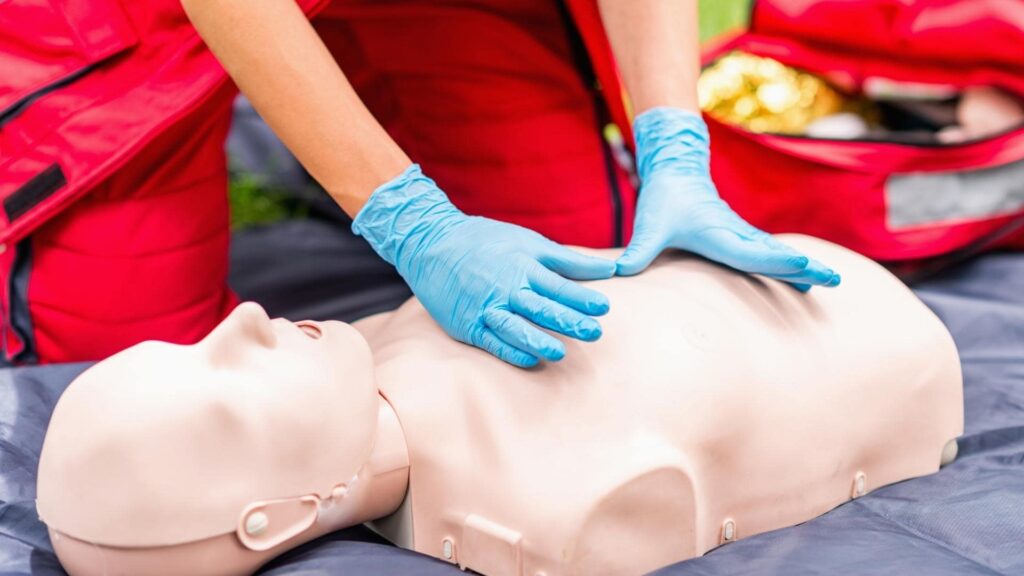Given that injuries and illnesses can happen at any time, it’s important to be prepared. With some basic first aid knowledge, you can prevent a minor accident from becoming more serious. A medical emergency is a frightening event, but if you are trained as a first aider, you could save someone’s life.
First Aid training equips you with the correct procedure and knowledge which is required to take immediate action during unforeseen circumstances or medical emergencies. At Coast2Coast we offer 2 different levels of First Aid Training, i.e. Standard First Aid & Emergency First Aid Training. You may wonder, “What is Standard First Aid Training & Emergency First Aid Training?’.
What Does Standard First Aid Training Entail
Standard First Aid & CPR training provides comprehensive First Aid skills to non-medical professionals. Some workplaces require the course from some employees. However, it is also the ideal course if you want to be prepared to deal with medical emergencies and accidents at home or your community.
The Canadian Red Cross Standard First Aid training covers all the theories and skills required to save a person’s life in various medical emergencies and accidents. Whether you opt to do the all-in-class or blended course, you need 100% attendance and participation to learn the required skills and understand the critical steps to follow.
Your understanding and adherence to the fundamental principles are evaluated by demonstrating your skills and passing the closed book evaluation with a minimum of 75%.
Course Description
During the course, you learn about the Red Cross principles and best practices for responding to emergencies. You also study how the emergency system works and how to perform check, call, and care without losing precious time.
By completing the course, you will know how to deal with breathing and airway emergencies, circulation and diabetic emergencies, cardiac arrest, and bleeding and wound care. You also learn how to handle patients with neck, head, and spine injuries, those who have suffered seizures and strokes, and poisoning (opioids included). Moreover, you learn how to help patients with bone, muscle, and joint injuries and what to do in several environmental emergencies.
Finally, CPR/AED Level A or Level C (includes CPR for children and infants) training is critical to Standard First Aid training. You learn how to administer cardiopulmonary resuscitation and use the automated external defibrillator in patients suffering cardiac arrest. Your knowledge and skills can make the difference between life and death at this crucial time.
Learn about First Aid Training you might need
Get first aid trained and acquire skills to assist someone with your life-saving skills as you complete the course with us. Call our toll-free number to know more.
Course Duration
All-in-class Standard First Aid & CPR/AED with Level A requires 13 hours of teaching time over a two-day course. The same training with Level C CPR takes 16 hours over two days.
If you prefer to start your Standard First Aid training online, then the theoretical part of the course takes between 7 and 8 hours to complete. The advantage of the online blended course is that you can finish this section in your own time.
After that, expect the in-class work to take 5.5 hours with Level A CPR and 8 hours with Level C.
Recertification requires 6.5 to 7.5 hours when done all-in-class, depending on your CPR Level, and 4 hours online and 3 to 4 hours with the online blended course.
Certificate Validity
In Ontario, Standard First Aid & CPR/AED certification is valid for three years. After that, you can take a recertification course and alternate between the two.

What is the Course Content
The Standard First Aid training covers a range of theoretical and practical lessons about all the work. These aim to ensure you can confidently practice all the skills by leveraging everything you have learned and practiced.
What Professions Need Standard First Aid Training
The Ontario Workplace Safety and Insurance Board recommends the type of First Aid training required by employees according to the kind of workplace. For example, all workplaces with more than five employees per shift need at least one person to have Standard First Aid & CPR certification during each shift.
Other professionals and scholars that need the certification for Standard First aid include daycare center employees, safety and security employees ( including police and border patrols), firefighters, lifeguards, ski patrols, and construction workers. Furthermore, nursing students, healthcare workers, pharmacists, and anyone responsible for youth groups, carers of the elderly and children of all ages, and those caring for people with special needs also require Standard First Aid training.

What You Learn by the End of the Course
Once you have completed the Standard First Aid course, you are ready to deal with all possible emergencies you may face at work or in other environments. Whether you take the training to broaden your career choices, because it is compulsory, or because you want to help others, your theoretical knowledge and practical skills will give you the confidence to perform them instantly when required. There is nothing better than having the skill set to deal with any emergency anytime and anywhere.
Find a Training Center Near You
In Ontario, Coast2Coast provides several First Aid and CPR courses and levels according to your professional and personal needs. As a Canadian Red Cross training partner with WSIB approval, their availability across the province makes it easy to find First Aid training near you in the Greater Toronto Area, Western and Eastern Ontario. So book today and prepare to receive the certification that will help you assist others.




















